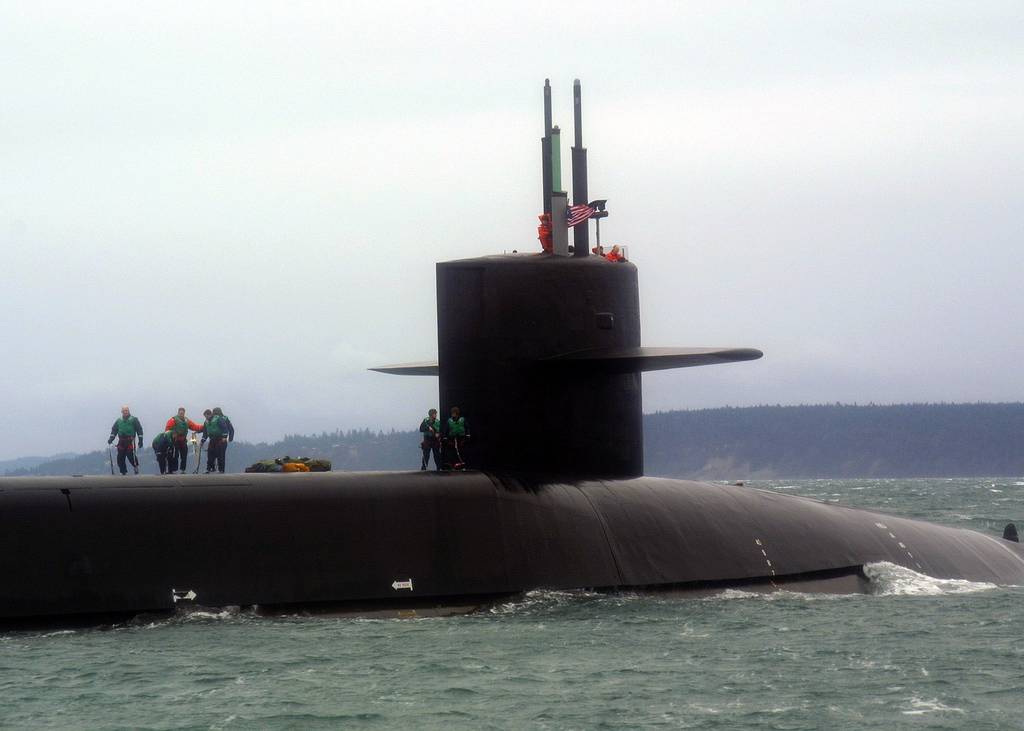
WASHINGTON ― Congress intends to give the Pentagon a carveout in a short-term funding bill that will allow the Navy to begin construction on a new ballistic missile submarine. Without that exemption, service leaders have expressed concern that congressional budget dysfunction could otherwise push the program behind schedule and create a nuclear deterrence gap in the years ahead.
The Senate’s bipartisan stopgap funding bill, released Tuesday, includes a rare exemption that would allow the Navy to start building the second Columbia-class submarine before Congress passes a full Pentagon budget for fiscal 2024. A rival stopgap funding bill introduced by House Republicans also includes the Columbia-class carveout. It’s unclear when Congress will pass the exemption into law, as unrelated issues threaten to spark a government shutdown at the end of the week.
While lawmakers broadly agree on the need to allow the Navy to procure the next Columbia-class submarine as soon as possible, that cannot begin until both chambers agree on a stopgap funding bill.
House Speaker Kevin McCarthy, R-Calif., has added several provisions to the House bill opposed by Democrats at the behest of the far-right Freedom Caucus, including a Republican immigration bill and non-defense spending cuts. And the bipartisan Senate bill includes another $6 billion in economic and military aid for Ukraine, which a growing number of House Republicans oppose.
The impasse means a government shutdown is likely. There’s no telling how long it may last, making it unclear when the Navy can procure the next Columbia-class submarine. And even if Congress does coalesce around a stopgap funding bill, it will still disrupt three other Navy ship programs: the Virginia-class attack submarine, the Constellation-class frigate and a new submarine tender replacement program.
Though the Navy does not want to see any of its acquisition programs disrupted, the Columbia-class ballistic missile submarine program holds particular national security importance.
The Columbia program replaces the aging Ohio-class ballistic missile submarines, which today prowl the world’s oceans with nuclear missiles onboard. Their entire mission is to remain hidden under the seas in case called upon for a nuclear strike. They will begin to reach the end of their lives and decommission in FY27.
The Columbia program is already on a tight schedule that’s growing ever tighter as construction challenges arise. The Navy originally crafted an “accelerated schedule” that would have delivered the first boat in the program six months ahead of its contractually obligated timeline, but Vice Chief of Naval Operations Adm. Lisa Franchetti told the Senate earlier this month that buffer was completely gone now due to a string of manufacturing, workforce and supply chain delays. The boat is still meeting its original contractual schedule, though, she noted.
The first boat, called the District of Columbia, must be delivered to the Navy by the General Dynamics’ Electric Boat yard in Connecticut by the fall of 2027 so it can undergo substantial testing ahead of a 2031 maiden deployment. If it misses that first patrol due to construction delays, the Navy and the country could see a gap in its at-sea nuclear deterrence in 2031.
The program will only grow more challenging from there, as the Navy picks up the pace and will begin to buy the massive submarines at a one-a-year rate, despite industry challenges on the first boat.
The second boat in the program is one of nine ships the Navy intends to buy in FY24, and Franchetti said the service, without the congressional carveout, would not be allowed to buy it and begin construction activities under the continuing resolution — which, depending on the length of the delay, risks a cascade of delays at the shipbuilder and its thousands of suppliers.
Bryant Harris is the Congress reporter for Defense News. He has covered U.S. foreign policy, national security, international affairs and politics in Washington since 2014. He has also written for Foreign Policy, Al-Monitor, Al Jazeera English and IPS News.
Megan Eckstein is the naval warfare reporter at Defense News. She has covered military news since 2009, with a focus on U.S. Navy and Marine Corps operations, acquisition programs and budgets. She has reported from four geographic fleets and is happiest when she’s filing stories from a ship. Megan is a University of Maryland alumna.
- SEO Powered Content & PR Distribution. Get Amplified Today.
- PlatoData.Network Vertical Generative Ai. Empower Yourself. Access Here.
- PlatoAiStream. Web3 Intelligence. Knowledge Amplified. Access Here.
- PlatoESG. Carbon, CleanTech, Energy, Environment, Solar, Waste Management. Access Here.
- PlatoHealth. Biotech and Clinical Trials Intelligence. Access Here.
- Source: https://www.defensenews.com/congress/2023/09/27/exemption-given-for-navy-to-build-nuclear-sub-in-stopgap-funding-bill/



